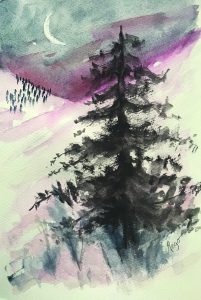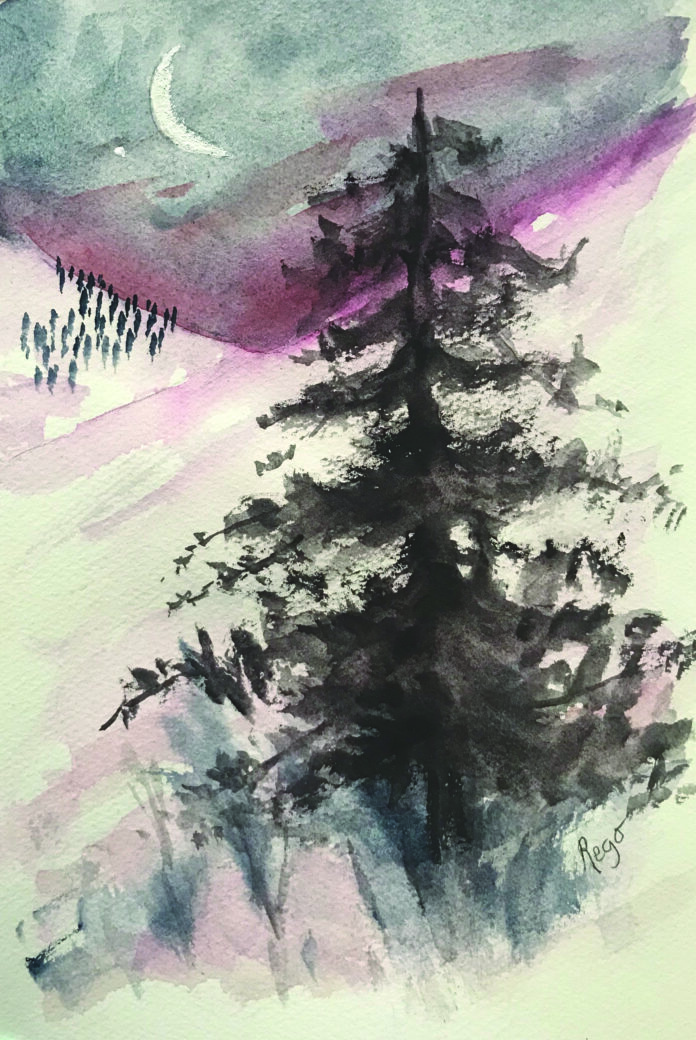
A bit before eight o’clock in the morning and the sky is magenta. Streaks of color are shooting upwards. There is a sliver of moon still showing. Venus is bright just below the curve of the crescent. The moon goes from stark white to a gentle pink, reflecting the colors in the sky.
Early morning and the sky continues to be darker in value than the snowy landscape. Generally, the sky is the lightest value in a landscape, but with snow on the ground the values switch and the ground plane becomes lighter. Snow is a light and highly reflective surface. Because of its reflective quality, the color of snow is affected by the surrounding colors, most particularly the sky.
As the sky shifts into a darker and darker magenta, the snow comes alive, glistening crimson. Mounds of snow are glowing pink. Even the air seems to shimmer pink. It is as though I am looking through rose-colored glass. Day breaks. The sky goes from pink to blue. As this transition progresses, the color of snow mutates. The pink subsides and I begin to see violets that turn into shadowy blue. Subtle variations of warm and cool colors are instantly recorded in the snow.
The sun rises over the mountaintops. The snow turns a warm white. As the sun hits the snow, shades of yellow appear. On the shadowed sides of the mountains, the snow casts off purple-greys. Deep under the pine trees, the snow becomes a warm russet red, duplicating the warm tones of the bark. It seems like a white world out there, but a lot of subtle and not-so-subtle colors share the limelight. From one moment to the next snow can shift from yellow to pink, blue to russet, or from cold to warm.
What is the color of snow? For me early this morning it was an otherworldly crimson.
Leslie Rego is an Idaho Press Club award-winning columnist, artist and Blaine County resident. To view more of Rego’s art, visit leslierego.com.



